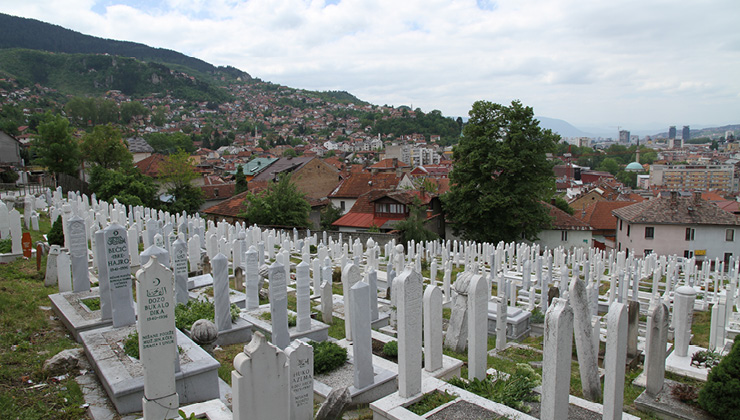Ahead of the 2022 Kenyan elections, Tchérina Jerolon looks at election related gender-based violence in Kenya, the States response and why – despite the introduction of new frameworks in response to the violence – the root causes must also be addressed for the violence to really be tackled.
On December 10th, 2020, the High Court of Kenya delivered a landmark judgement in favour of four female survivors of sexual and gender-based violence (SGBV) committed during the 2007-2008 post-election violence (PEV). Following an almost eight-year long procedure, the Court found that the Government of Kenya was responsible for failing to conduct independent and effective investigations and prosecutions of SGBV committed by state agents and awarded each survivor compensation of KES 4 million. In the run-up to the 2022 general elections, one question springs to mind: Can this judgement pave the way to a deeper reflection on the underlying reasons why election-related sexual and gender-based violence remains one of the main features of political violence in the country?
Official recognition matters
While Kenya has experienced election-related violence since the introduction of multi-party politics in 1991, the scope and nature of the 2007-2008 PEV was unprecedented. Within the weeks that followed the polls, thousands of civilians were victims of killings, forced displacements, destruction of property, and sexual and gender-based violence. SGBV included rape, gang rape, forced circumcision, partial or complete penile amputation, among other crimes.
In their statement welcoming the Court’s judgement, the petitioners – eight survivors along with four NGOs – declared that it “marked the first time ever in Kenya that post-election sexual violence has been legitimately recognized by the government”. This point is essential. Official recognition of the reality and various manifestations of politically motivated SGBV is key. Why? For at least two main reasons.
First, in the context of the 2007-2008 PEV, official recognition can be seen as one of the prerequisites to a deeper understanding of the structural and institutional factors that permitted election-related SGBV. Official recognition involves determining what exactly has happened, to whom, by whom and why did it happen to these particular persons. It can involve dispelling false narratives about the reality of SGBV and can also be essential to trigger the design of prevention and reparation measures. Yet, until the High Court’s decision, there had been no such a recognition, at the highest level of the State, despite recurring demands from various actors.
Secondly, and if we now look at the prevalence of SGBV during the 2013 and 2017 general elections, official recognition can be seen as a major step towards contributing to breaking the pervasiveness of SGBV in Kenyan politics. Kenyan authorities, but also political parties and the media, must now recognise the nexus that exists between the desire to retain or conquer political power and the use of sexual and gender-based violence as one of the means to achieve this goal.
They must also recognise that this particular form of political violence targets primarily women. Failing to acknowledge this particularity of the political scene is failing to take the necessary measures to ensure that women can exercise their right to freely participate in the country’s political life (as voters, candidates, supporters, peaceful demonstrators).
SGBV during the 2013 and 2017 general elections
Men and women are affected differently by political violence In the case of women – and although we recognise that women do not form a homogeneous group and that their experience may differ depending on various factors including their class, ethnicity and perceived or real political affiliation – political violence often manifests in a form of gender-based oppression which aims at or tends to keep them away from the political participation.
Drawing from the framework developed by Bardall, Bjarnegård and Piscopo to define gendered political violence, we could argue that, in Kenya, the motive of such violence against female politicians appears to be the preservation of hegemonic men’s control over the political system and the resistance to women’s transgression of pre-determined gender roles; the form of such violence can be physical and psychological and is often sexualized in nature, including online; and the impact may include dissuading women from participating in the public life or, when they are in office, compelling them to take certain decisions.
Kenyan authorities, but also political parties and the media, must now recognise the nexus that exists between the desire to retain or conquer political power and the use of sexual and gender-based violence as one of the means to achieve this goal.
But what we also want to highlight is that in the Kenyan context, SGBV is also one of the main forms of political violence used against “ordinary” women – and men – in particular when elections lead to an outbreak of violence. Here also, the violence is often motivated by a desire to exercise political dominance and power, including over certain communities, and while the impacts may be diverse, they may include women’s reluctance to participate into the electoral process.
In 2010, Kenya adopted a new Constitution which provides for a robust Bill of Rights and introduces a “gender rule” by virtue of which “no more than two-thirds of the members of elective or appointive bodies shall be of the same gender”. During the 2013 general elections – in which the quota policy was applied for the first time – an increased number of women were represented in Parliament and in the newly created County Assemblies.
These elections were the scene of unprecedented levels of violence against female politicians, motivated by a strong opposition to the quota policy. Some female candidates, elected or nominated, experienced attempted rapes and were called “prostitutes”. Berry, Bouka and Kamuru described this situation as a “patriarchal backlash against women, potentially undermining their gains by normalizing new forms of oppression”.
In a recent study, the United Nations Human Rights Office of the High Commissioner (OHCHR), UN Women and Physicians For Human Rights (PHR) highlighted similar patterns of violence during the 2017 general elections during which a large number of female candidates experienced verbal and physical attacks and threats of sexual violence. The authors further noted that according to some female candidates, the threats often escalated to actual perpetration of election-related sexual violence. The violence also targeted ‘ordinary’ women, in particular when the security situation deteriorated in opposition strongholds. This was the highest level of election-related violence reported since 2007-2008. The Kenya National Commission on Human Rights (KNCHR), which referred to sexual violence as a weapon for electoral-related conflict, documented at least 201 persons, mostly women and girls, who were subjected to rape and other forms of sexual violence, based on their perceived political affiliation.
How can the High Court’s judgment contribute to the debate?
So far, the Government of Kenya has made no public statement on the High Court’s judgment. Yet, this silence should not obstruct the necessary reflection on the reality and various manifestations of election related SGBV, particularly ahead of the 2022 general elections. Alongside recommendations that have already been put forward, including within the aforementioned report from OHCHR, UN Women and PHR, the High Court’s judgment can help foster this reflection and its subsequent call to action.
The Court confirmed the State’s responsibility to investigate and prosecute SGBV when the violence is committed at the hands of its own agents. In doing so, the Court contradicted the unconvincing State narrative according to which survivors have primary responsibility to investigate and prove the crime. Multiple sources had indeed highlighted the numerous obstacles that made it practically impossible for SGBV survivors to seek accountability measures during situations of political unrest (these included procedural limitations, lack of trust in the police, fear of further intimidation, humiliation or apathy from police agents). The Court’s finding could potentially pave the way to a deeper reflection on the practical difficulties that female politicians may also encounter when they seek accountability for SGBV (including, for instance, when such violence is committed online).
The Court confirmed the State’s responsibility to investigate and prosecute SGBV when the violence is committed at the hands of its own agents. In doing so, the Court contradicted the unconvincing State narrative according to which survivors have primary responsibility to investigate and prove the crime.
By contrast, the Court declined the State’s responsibility when the violence is committed by non-state actors and is not reported to the police. Here, a deeper contextual analysis of the variety of ways in which election related SGBV may occur seems necessary for the broader debate. Indeed, non-state actors may also be perpetrators, including sometimes in collusion with State agents.
Will history continue to repeat itself?
The point here is not to state that nothing has been done to respond to the prevalence of SGBV. On the contrary, and mainly due to the intense mobilisation of women’s rights organisations and activists, Kenya has developed a robust legal and procedural framework to prevent and punish sexual violence (with the Constitution, the Sexual Offences Act, the National Guidelines on Management of Sexual Violence, among others.). While this framework is to be welcomed, its effective implementation should be part of a comprehensive approach that acknowledges the specificity of election related SGBV, in particular against women, and that seeks to address it.
In its 2020-2024 National Action Plan on Women, Peace and Security, the Government of Kenya indicated that “the increase in elective and public office positions has resulted in more aggressive electoral processes that are not conducive to the effective participation of women”. The NAP also referred to the “patriarchal nature of Kenyan society” seen as encouraging the practice of forced marriage and contributing to “low level of participation of women in decision making processes”. This is an important step. However, the NAP does not explicitly highlight how political violence targets women in a distinct way and does not make meaningful suggestions to address this challenge.
Yet, in order for the violence to be tackled, it has to be officially recognised and named for what it is, its root causes have to be identified, it has to be prevented, monitored, denounced, and investigated. The responses must also include dismantling the unequal power relations that exist between men and women. Otherwise, the risk is to normalise election-related SGBV and to only see it as the unfortunate collateral damage of politics.
The views, thoughts and opinions expressed in this blog post are those of the author(s) only, and do not necessarily reflect LSE’s or those of the LSE Centre for Women, Peace and Security.
Image: On October 24, 2017, Fanis Lisiagali, Executive Director of Healthcare Assistance Kenya, leads the White Ribbon Campaign march and promotes their rapid response call center hotline which responds to violence against women in elections in Nairobi, Kenya, as part of IFES’s Kenya Electoral Assistance Program. Credit: (USAID CC BY-NC 4.0).




